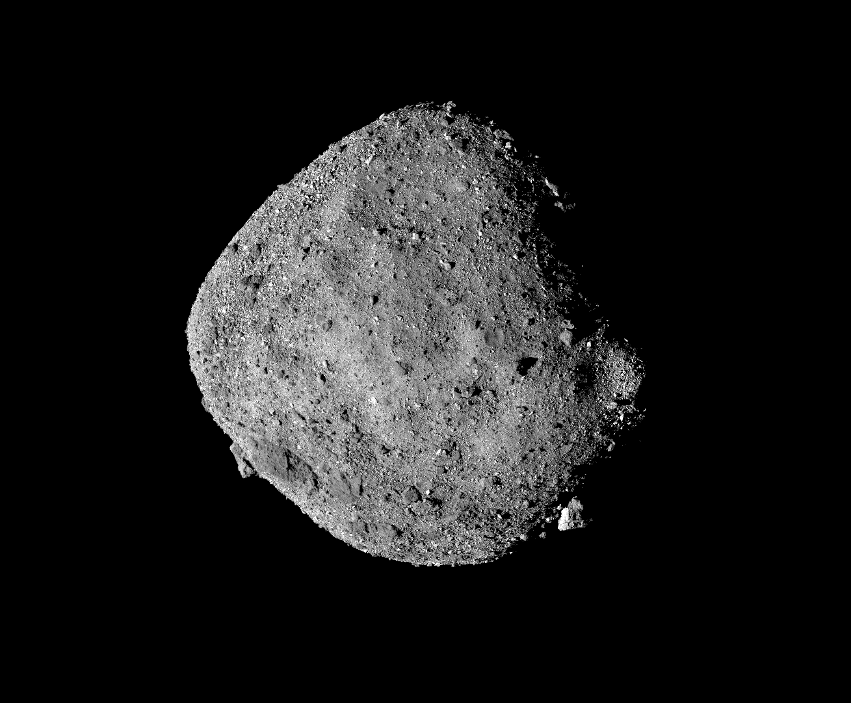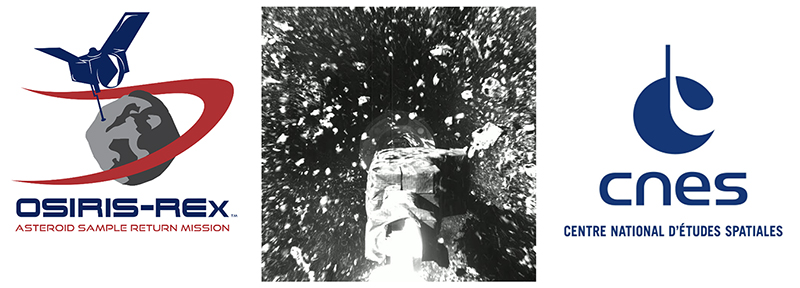O-Return
In preparation for the 1st study of
OSIRIS-REx return asteroid samples
ANR-21-CE49-0005
Astrophysics |
Material Sciences |
|
|
Laboratoire Lagrange UMR 7293, PI: Guy Libourel |
Centre of Research Co-PI: Marc Portail |
NASA's OSIRIS-REx asteroid sample return mission
- Lagrange is on board -


Bennu samples return to Earth, sept. 24 th, 2023 !
Project summary
Owing to a high-resolution cathodoluminescence systematic study of carbonaceous chondrites and NASA OSIRIS-REx returned samples, O-Return is a 4 years ANR project aiming at gaining new information on the conditions of formation (e.g. condensation, crystallization, annealing) of refractory inclusions and chondrules, the first solids in the Solar System, and on their astrophysical setting (e.g., shock waves, impacts). Through the different tasks of O-Return that we will emplace, our approach will consist: i) to perform an unprecedented high-resolution cathodoluminescence study of olivines and pyroxenes, the most abundant phases in magnesian (type I) chondrules, and to extend the survey to Amoeboid Olivine Aggregates (AOA), the most common type of refractory inclusions in carbonaceous chondrites. This study will give us an unique inventory of their mode of crystallization and their variability, ii) to synthesize thin films of Mg-rich olivine and pyroxene doped with known CL activator concentrations (Al, Mn, Cr) at the level of a few ppm and to acquire their optical characteristic for serving as new standards, in order to upgrade high-resolution cathodoluminescence imaging to a quantitative mode of detection of trace elements and lattice defects, and iii) to model olivine and pyroxene crystallization conditions/modes in both chondrites and OSIRIS-REx returned materials to gain insights on 1) locations for chondrule/AOA formation in the disk, 2) their putative astrophysical settings, and 3) the dynamical regimes reigning in the protoplanetary disk.
To achieve this work, the O-Return project will develop an original and transdisciplinary research merging expertises from both materials and planetary sciences between two renowned laboratories J-L LAGRANGE and Centre of Research on Hetero-Epitaxy and Applications (CRHEA). The originality of this project lies in the use of high-resolution cathodoluminescence, which has never been fully exploited on extraterrestrial objects, and the synthesis of unique standards, which will allow a quantified interpretation of the CL signature of chondrites and OSIRIS-REx returned samples. Owing to this innovative combination, the expectation is to provide a quantum leap improvement in our understanding of the early evolution of the Solar System and Youg Stellar Objects.
Summary table of persons involved in the project
| Partner | Name | First name | Current position |
Role and responsibilities in the project (4 lines max) |
Involvement (person.month) throughout the project's total duration |
| Laboratoire Lagrange UMR 7293, Observatoire de la Côte d’Azur, Université Côte d’Azur, Nice |
LIBOUREL | Guy | Professor | Coordination, Cosmochemistry Leader of task 1 and 3 | 29 |
| MICHEL | Patrick | Research director |
Astrophysics Tasks 1, 3 | 5 | |
| SERET | Anthony | Post-Doc | Cosmochemistry aspects Tasks 1, 2, 3 | 24 | |
| Centre of Research on Hetero-Epitaxy and Applications, CRHEA UPR 10, Valbonne |
PORTAIL | Marc | Research engineer |
Partner’s scientific leader, Leader of task 2, synthesis and optical characterizations | 18 |
| NEMOZ | Maud | Research engineer |
Structural characterizations, Task 2 | 6 | |
| CHENOT | Sébastien | Research engineer |
Sputter deposition, Task 2 | 6 | |
| BRANDLI | Virginie | Research engineer |
Chemical characterization, task 2 | 6 | |
| GUIGOZ | Vincent | Technical engineer |
CL and EDX characterizations, tasks 1 and 2 | 24 |




